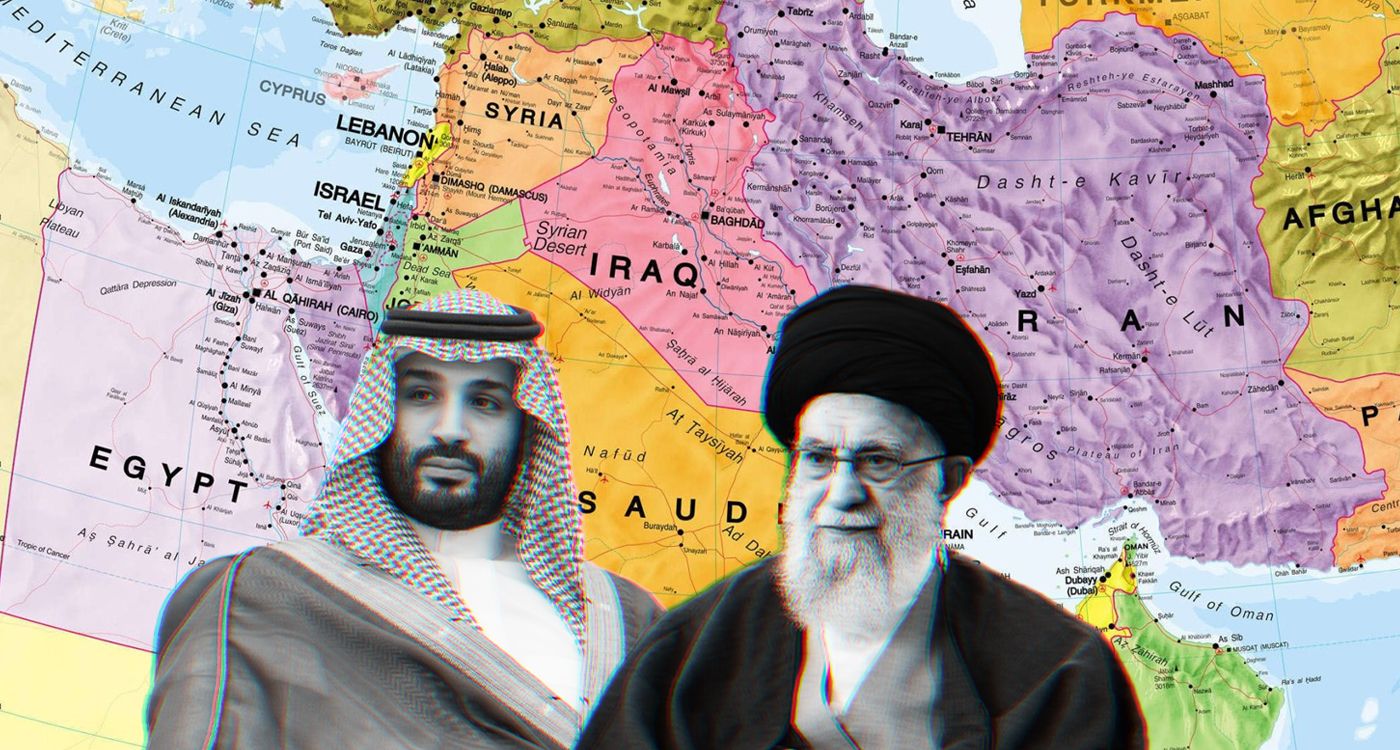- Home
- Middle East
- The New Middle East: A Struggle Between Two Visions

©This is Beirut
Over the past 80 years, the Middle East has consistently defied the predictions of analysts and commentators. The impulsive decisions of individual autocrats, and the complex interplay of geopolitics, wealth, religion, and great-power rivalry have made the region uniquely vulnerable to rapid and often catastrophic upheavals.
We can cite countless cataclysms that are shaping the world we live in today which originated in the Middle East: Iran’s 1979 revolution, Iraq’s invasion of Kuwait in 1990, the September 11 terrorist attacks in the United States, the Arab Spring, the rise of the Islamic State in Iraq and Syria, and most recently, the October 7 attacks in Israel.
It is thus a laborious affair to see through the mist in this part of the world. Yet, decades of bloodshed might now be heading toward a final consummation, as it becomes increasingly clear that the struggle for the Middle East is no longer defined by sects and ethnicities. It is no longer between Arabs and Jews or Shiites and Sunnis. The struggle has evolved into an ideological battle between two visions: one that seeks to stabilize and build, and another that aims to upend and destroy.
Today, for the first time, there is hope that the former vision might prevail.
October 7, 2023
When Yahya Sinwar, the late Hamas leader, ordered an attack on Israel on October 7, 2023, he had pictured a region embroiled in a final showdown between good and evil, one in which the good triumphantly prevails. Sinwar’s romantic plan had three main elements: a multi-frontal assault led by Iranian proxies, a Palestinian uprising in the West Bank and timid US assistance to Israel as a result of diminished American interest in the region. This recipe was supposed to bring about the decisive military defeat of Israel. A Middle East without Israel was Sinwar’s vision. As it turned out, Hamas deeply overestimated its allies’ strength, who refused to participate in any spectacular fashion, except when Iran launched 300 rockets into Israeli territory.
Nevertheless, members of the axis of resistance preferred to aid Gaza by fighting from within their borders, rather than invading, a decision that did not live up to Hamas’ goal of destroying Israel. Palestinians in the West Bank similarly failed to mobilize in any significant way, partly due to the IDF quick and effective deployment in the area, but also because Israel’s intense military campaign in Gaza probably dissuaded many West Bankers from aiding their brethren. Moreover, Hamas misinterpreted America’s realignment away from the Middle East as a desire to fully disengage from the region. In reality, the US still views the Middle East as vital to global stability and trade, and still considers Israel not only a natural ally but also a nation it has a moral duty to protect. Contrary to Hamas’ expectations, in Israel’s time of need, America came in great force.
An Opening
This miscalculation eventually led to the decapitation of Hezbollah’s leadership, compelling the Lebanon-based group to accept ceasefire terms it had long rejected. Two weeks later, the Assad regime, which ruled Syria for more than half a century, collapsed. As a result, Iran lost the land corridor connecting its borders to Israel’s, a corridor that Iran had spent significant treasure, time, and lives to establish over the past four decades. The military defeat of the axis has created an opening for regional players like Saudi Arabia, Bahrain, Egypt, Jordan, and the United Arab Emirates to advance their vision for the region.
What Is the New Middle East Based On?
But what does this vision entail? Saudi Arabia’s modernization efforts serve as a compelling proxy for the broader regional ambitions. They starkly contrast with Iran’s trajectory since the 1979 Khomeinist revolution: Saudi Arabia reopened movie theaters in 2018 and is investing heavily in arts and entertainment. Tourism is surging in the Kingdom, while Iran continues taking foreign hostages. Saudi women are gaining rights, whereas Iranian women face more restrictions than their grandmothers. Saudis are much wealthier, with a GDP twice that of Iran despite a smaller population. Iran struggles with soaring inflation, while Saudi Arabia maintains a steady 2% rate and holds $450 billion in foreign reserves—20 times Iran's. More than 150,000 Iranian professionals leave Iran annually, costing Iran’s economy $150 billion, surpassing its 2023 oil revenue. Meanwhile, most of the 70,000 Saudi students studying abroad return, benefiting their economy. At its core, the Arab vision aims at openness, development and prosperity. It is forward looking, modern and ambitious. Meanwhile, Iran’s project remains mired in outdated grievances and isolation. For the Middle East to truly transform, it must embrace the former vision.
Decades of disastrous wars and short-sighted policies have exhausted Arab populations and leaders alike. With Iran’s retrenchment and the fall of the Assad regime, regional players like Saudi Arabia and the UAE have a historic opportunity to increase their influence and help their people realize aspirations for stability and prosperity in a new Middle East. The situation however is still delicate. Machiavelli noted that there is nothing “more perilous to conduct, or more uncertain in its success, than to take the lead in the introduction of a new order of things.” It is therefore crucial that this vision be executed gradually and in a measured way.
Read more



Comments